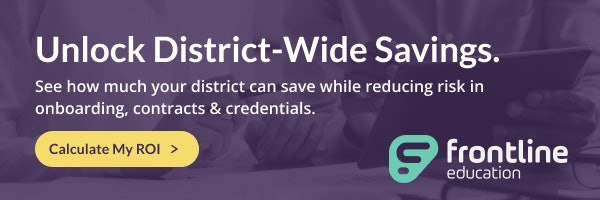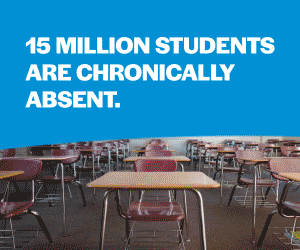
This ambiguity can make planning challenging, even for veteran K-12 leaders. Here are three key strategies that can help education leaders navigate this uncertainty within their communities.
Be the leader your stakeholders need.
When there’s a lot of uncertainty about the future, staff members and families are looking for leaders who can project a sense of calm and order. You might not have many answers, but by remaining calm and communicating what you do know, you can reduce the anxiety that naturally arises in these situations and keep employees focused on their tasks.
As PJ Caposey, superintendent of schools for Oregon Community Unit School District 220, told Education Week: “As a leader, your job is to provide clarity—even if the answers are incomplete or uncomfortable. Chaos breeds confusion, and confusion creates paralysis. … Silence is a vacuum, and vacuums get filled with speculation and fear.”
He continued: “If you panic, your team will panic. If you become reactive, your organization will become unstable. … The best leaders I have worked with have the ability to absorb stress without transferring it to others.”
Remain true to your mission and core values.
With the potential loss of federal dollars that school systems have relied on to close equity gaps, some school districts may have to revisit their budgets with an eye toward reducing expenses or reprioritizing initiatives.
As you make these hard choices, let your mission and core values be your guide. If you recommit to the values that define you, you’ll find a way to achieve your strategic goals—regardless of the resources you might (or might not) have available.
Leverage industry partners to maximize flexibility.
Having the capacity to be highly flexible and nimble in response to changing circumstances is critical during uncertain times. Leaders must be able to scale programs up or down very rapidly as conditions dictate—and having the right partnerships in place can help you do this effectively.
In times of budget cuts and staffing shortages, having a reliable online education partner can help districts maintain access to high-quality instruction without overburdening existing staff. The nonprofit VHS Learning partners with schools to offer a broad catalog of paced and self-paced courses taught by certified high school teachers. These turnkey courses can supplement or expand a district’s existing offerings and help ensure the needs of all students are met.
Founded in 1996 as a collaborative network of schools sharing instructional resources, VHS Learning continues to operate with a partnership mindset. Schools identify an on-site coordinator to help support student engagement, while VHS Learning supplies curriculum in all disciplines and delivers teacher-led, standards-aligned instruction online—offering districts a flexible way to fill gaps, support student learning, and adapt to changing circumstances.
Don’t let ambiguity become a barrier to success.
Uncertainty about the future and a lack of clarity around which resources might be available creates a very challenging environment for K-12 leaders. But this challenge doesn’t have to be an impediment to student achievement.
By demonstrating the leadership skills their stakeholders are looking for, committing to their organization’s mission and core values, and leveraging industry partners to maximize flexibility, educational leaders can weather the storm and steer their schools and students toward success.
Carol DeFuria is the President and CEO of VHS Learning, a Massachusetts-based nonprofit provider of online education for high schools and their students for nearly 30 years.
























